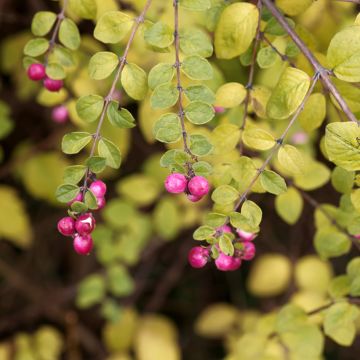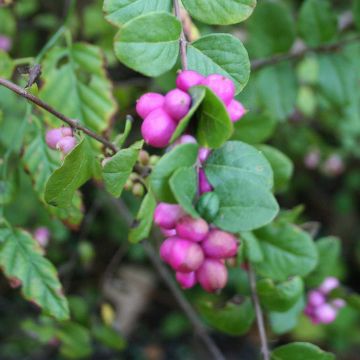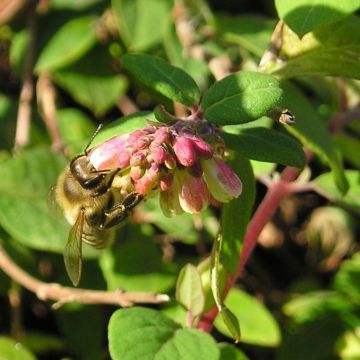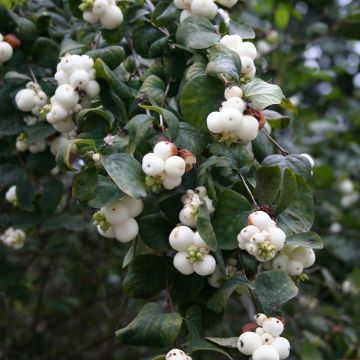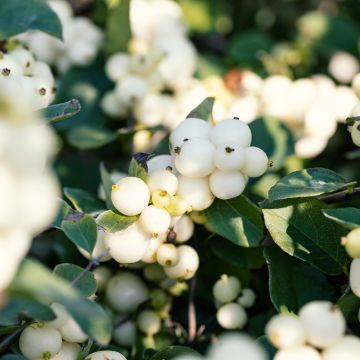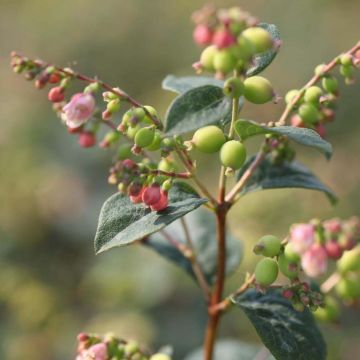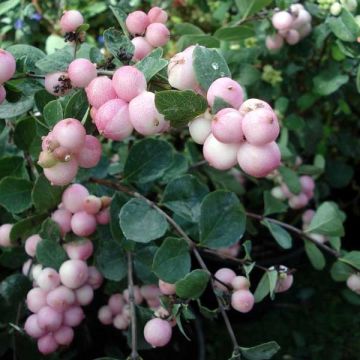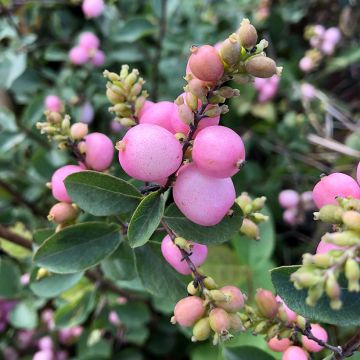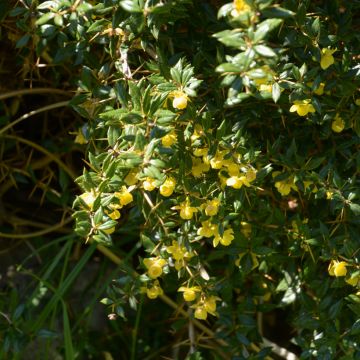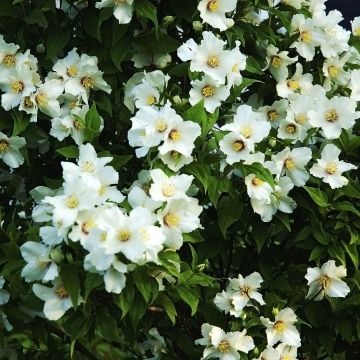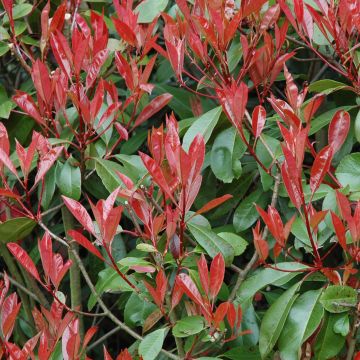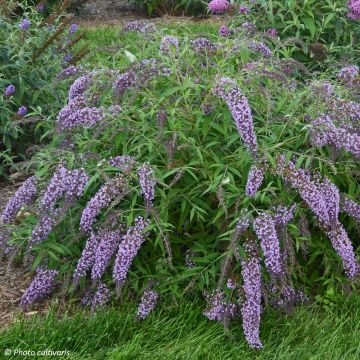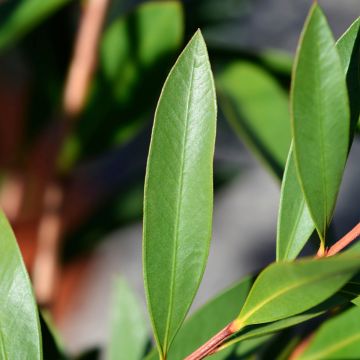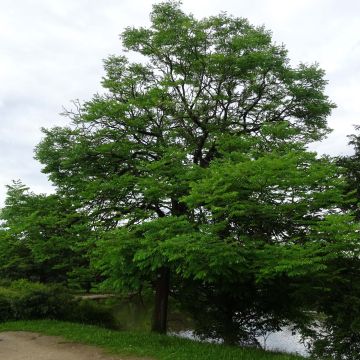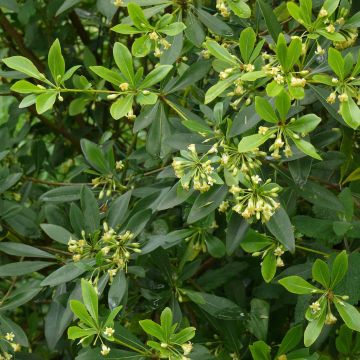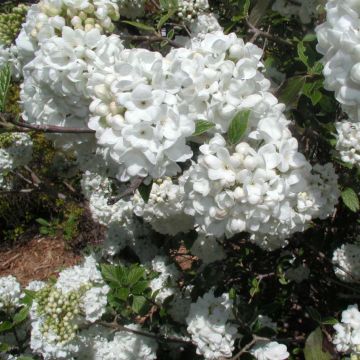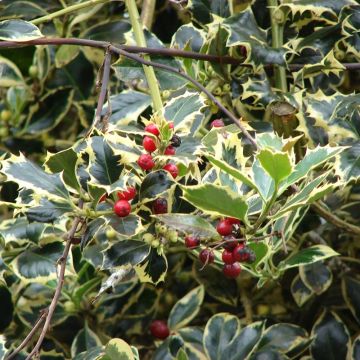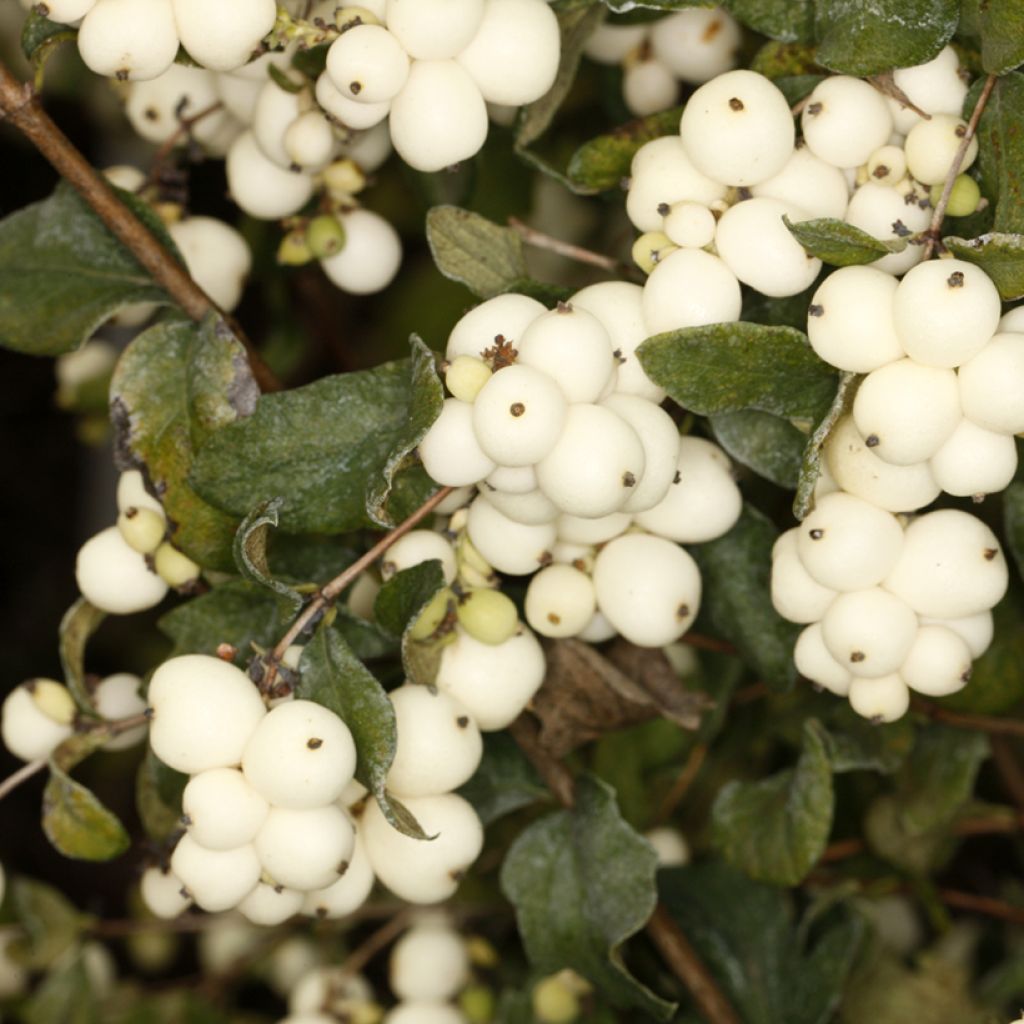

Symphoricarpos oreophilus
Symphoricarpos oreophilus
Symphoricarpos oreophilus
Mountain snowberry, Creeping snowberry, Mountain coralberry
Why not try an alternative variety in stock?
View all →This plant carries a 24 months recovery warranty
More information
We guarantee the quality of our plants for a full growing cycle, and will replace at our expense any plant that fails to recover under normal climatic and planting conditions.
From €5.90 for pickup delivery and €6.90 for home delivery
Express home delivery from €8.90.
Does this plant fit my garden?
Set up your Plantfit profile →
Description
Symphoricarpos oreophilus, also known as the Mountain Snowberry in North America, is a deciduous bush appreciated across the Atlantic for its robustness and its ability to adapt to various environments, especially in wet areas. There, this snowberry is commonly used for site restoration and improvement of wildlife habitat. Its delicate flowers and attractive white berries are also appreciated in gardens and landscaping.
Symphoricarpos oreophilus is a botanical species native to mountainous areas of North America, where it grows between 1,463 and 3,200 metres above sea level. It is often found near watercourses, in coniferous forests and wet areas, among shrubs, typically on acidic, sandy loam to clay loam soils. This low-growing bush, sometimes creeping, develops arching branches. It reaches a height of between 60 cm and 1.20 m but can reach up to 1.50 m under optimal conditions. The bell-shaped flowers, measuring between 0.6 and 1.2 cm in length, are usually white or pale pink, appearing solitary or in pairs. The flowering period extends from spring to summer, between May-June and July-August. The fruits are small, oval, light green berries that turn white when ripe, measuring up to 1.2 cm in length. The foliage is dense, composed of small green leaves that appear very early in spring and fall in autumn. Snowberries belong to the caprifoliaceae family, just like honeysuckles.
The Oreophilus Snowberry is an ideal plant for mountain gardens that make room for nature. This bush is also appreciated for its ability to stabilise soils and provide habitat for small fauna. It can be associated with plants such as the Douglas Fir, ponderosa pine, Virginia cherry, Amelanchier alnifolia 'Saskatoon Berry', Physocarpus opulifolius, and Viburnum opulus which share similar growing conditions. These associations allow for the creation of diverse and resilient ecosystems, while offering a variety of textures and colours throughout the year.
Report an error about the product description
Plant habit
Flowering
Foliage
Botanical data
Symphoricarpos
oreophilus
Caprifoliaceae
Mountain snowberry, Creeping snowberry, Mountain coralberry
Symphoricarpos rotundifolius var. oreophilus
North America
Other Symphoricarpos
Planting and care
Symphoricarpos oreophilus can be planted in full sun or partial shade, in a moist to damp soil, preferably non-calcareous. It is a hardy bush and not prone to diseases and pests. You prune in late winter to maintain its shape.
Planting period
Intended location
Care
This item has not been reviewed yet - be the first to leave a review about it.
Hedge shrubs
Haven't found what you were looking for?
Hardiness is the lowest winter temperature a plant can endure without suffering serious damage or even dying. However, hardiness is affected by location (a sheltered area, such as a patio), protection (winter cover) and soil type (hardiness is improved by well-drained soil).

Photo Sharing Terms & Conditions
In order to encourage gardeners to interact and share their experiences, Promesse de fleurs offers various media enabling content to be uploaded onto its Site - in particular via the ‘Photo sharing’ module.
The User agrees to refrain from:
- Posting any content that is illegal, prejudicial, insulting, racist, inciteful to hatred, revisionist, contrary to public decency, that infringes on privacy or on the privacy rights of third parties, in particular the publicity rights of persons and goods, intellectual property rights, or the right to privacy.
- Submitting content on behalf of a third party;
- Impersonate the identity of a third party and/or publish any personal information about a third party;
In general, the User undertakes to refrain from any unethical behaviour.
All Content (in particular text, comments, files, images, photos, videos, creative works, etc.), which may be subject to property or intellectual property rights, image or other private rights, shall remain the property of the User, subject to the limited rights granted by the terms of the licence granted by Promesse de fleurs as stated below. Users are at liberty to publish or not to publish such Content on the Site, notably via the ‘Photo Sharing’ facility, and accept that this Content shall be made public and freely accessible, notably on the Internet.
Users further acknowledge, undertake to have ,and guarantee that they hold all necessary rights and permissions to publish such material on the Site, in particular with regard to the legislation in force pertaining to any privacy, property, intellectual property, image, or contractual rights, or rights of any other nature. By publishing such Content on the Site, Users acknowledge accepting full liability as publishers of the Content within the meaning of the law, and grant Promesse de fleurs, free of charge, an inclusive, worldwide licence for the said Content for the entire duration of its publication, including all reproduction, representation, up/downloading, displaying, performing, transmission, and storage rights.
Users also grant permission for their name to be linked to the Content and accept that this link may not always be made available.
By engaging in posting material, Users consent to their Content becoming automatically accessible on the Internet, in particular on other sites and/or blogs and/or web pages of the Promesse de fleurs site, including in particular social pages and the Promesse de fleurs catalogue.
Users may secure the removal of entrusted content free of charge by issuing a simple request via our contact form.
The flowering period indicated on our website applies to countries and regions located in USDA zone 8 (France, the United Kingdom, Ireland, the Netherlands, etc.)
It will vary according to where you live:
- In zones 9 to 10 (Italy, Spain, Greece, etc.), flowering will occur about 2 to 4 weeks earlier.
- In zones 6 to 7 (Germany, Poland, Slovenia, and lower mountainous regions), flowering will be delayed by 2 to 3 weeks.
- In zone 5 (Central Europe, Scandinavia), blooming will be delayed by 3 to 5 weeks.
In temperate climates, pruning of spring-flowering shrubs (forsythia, spireas, etc.) should be done just after flowering.
Pruning of summer-flowering shrubs (Indian Lilac, Perovskia, etc.) can be done in winter or spring.
In cold regions as well as with frost-sensitive plants, avoid pruning too early when severe frosts may still occur.
The planting period indicated on our website applies to countries and regions located in USDA zone 8 (France, United Kingdom, Ireland, Netherlands).
It will vary according to where you live:
- In Mediterranean zones (Marseille, Madrid, Milan, etc.), autumn and winter are the best planting periods.
- In continental zones (Strasbourg, Munich, Vienna, etc.), delay planting by 2 to 3 weeks in spring and bring it forward by 2 to 4 weeks in autumn.
- In mountainous regions (the Alps, Pyrenees, Carpathians, etc.), it is best to plant in late spring (May-June) or late summer (August-September).
The harvesting period indicated on our website applies to countries and regions in USDA zone 8 (France, England, Ireland, the Netherlands).
In colder areas (Scandinavia, Poland, Austria...) fruit and vegetable harvests are likely to be delayed by 3-4 weeks.
In warmer areas (Italy, Spain, Greece, etc.), harvesting will probably take place earlier, depending on weather conditions.
The sowing periods indicated on our website apply to countries and regions within USDA Zone 8 (France, UK, Ireland, Netherlands).
In colder areas (Scandinavia, Poland, Austria...), delay any outdoor sowing by 3-4 weeks, or sow under glass.
In warmer climes (Italy, Spain, Greece, etc.), bring outdoor sowing forward by a few weeks.


































